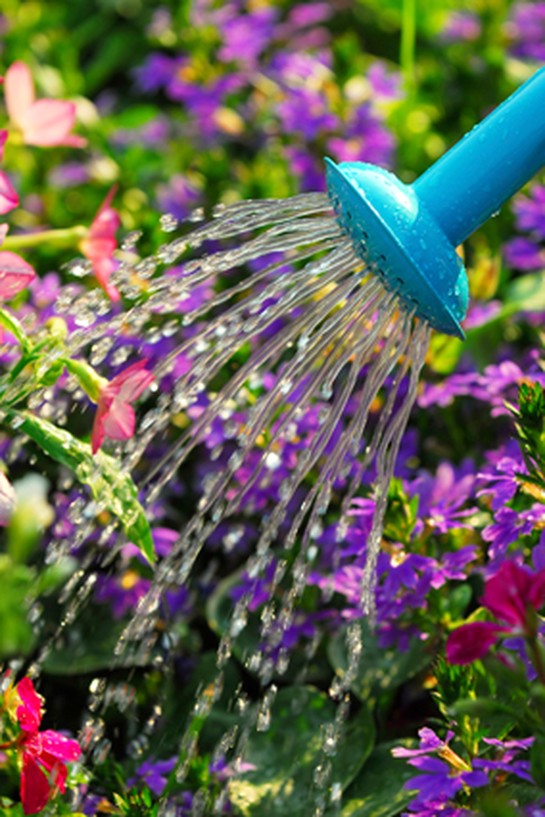5 Secrets to Getting Gorgeous Flowers
Teri Dunn Chace, author of The Anxious Gardener's Book of Answers gives her best advice.
By Abbe Wright
Understand the Word "Watering"
Plants need water in order to thrive, but getting it to them—so much more complicated than it first sounds: There's overwatering, underwatering, watering the wrong part of the plant (the leaves instead of the roots), and each can cause the demise of a number of varieties.
The right way: Determine how much water a plant, flower bed or lawn needs (online guides can help), and then deliver it with as little waste as possible. (Which is to say: Standing over part of your garden with the hose may not do the trick.) "A good, basic overall tip that I always relay is that deep watering is best," Chace says. "It inspires plant roots to grow deeper into the earth, making them healthier and more drought-resistant. This is true for your rosebushes as well as your front lawn."
If you've goofed: Your plants will let you know—they'll wilt or their leaves will turn yellow. "If you mend your ways, chances are they'll recover," Chace says. The exception is extreme overwatering: Many garden plants can die in truly soggy soil—root systems can rot in as little as a day—and the only solution is to tear them out and start again.
The right way: Determine how much water a plant, flower bed or lawn needs (online guides can help), and then deliver it with as little waste as possible. (Which is to say: Standing over part of your garden with the hose may not do the trick.) "A good, basic overall tip that I always relay is that deep watering is best," Chace says. "It inspires plant roots to grow deeper into the earth, making them healthier and more drought-resistant. This is true for your rosebushes as well as your front lawn."
If you've goofed: Your plants will let you know—they'll wilt or their leaves will turn yellow. "If you mend your ways, chances are they'll recover," Chace says. The exception is extreme overwatering: Many garden plants can die in truly soggy soil—root systems can rot in as little as a day—and the only solution is to tear them out and start again.
Published 05/08/2012
As a reminder, always consult your doctor for medical advice and treatment before starting any program.


